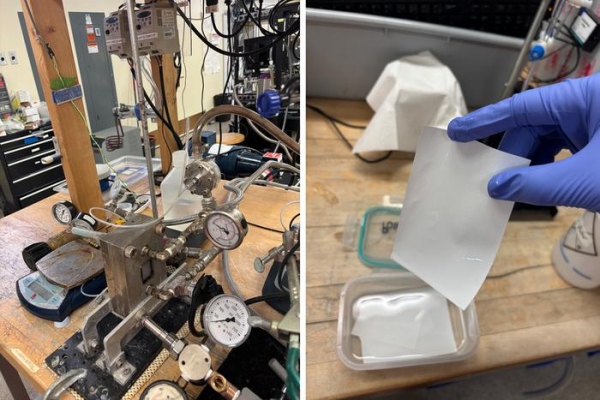Used in everything from soda cans and foil wrap to circuit boards and rocket boosters, aluminum is the second-most-produced metal in the world after steel. By the end of this decade, demand is projected to drive up aluminum production by 40 percent worldwide. This steep rise will magnify aluminum’s environmental impacts, including any pollutants that are released with its manufacturing waste.
MIT engineers have developed a new nanofiltration process to curb the hazardous waste generated from aluminum production. Nanofiltration could potentially be used to process the waste from an aluminum plant and retrieve any aluminum ions that would otherwise have escaped in the effluent stream. The captured aluminum could then be upcycled and added to the bulk of the produced aluminum, increasing yield while simultaneously reducing waste.
The researchers demonstrated the membrane’s performance in lab-scale experiments using a novel membrane to filter various solutions that were similar in content to the waste streams produced by aluminum plants. They found that the membrane selectively captured more than 99 percent of aluminum ions in these solutions.
The researchers demonstrated the membrane’s performance in lab-scale experiments, pictured, using a novel membrane to filter various solutions that were similar in content to the waste streams produced by aluminum plants. (Photo Credit: Trent Lee)
Sustainability Sci/Tech Top Stories

